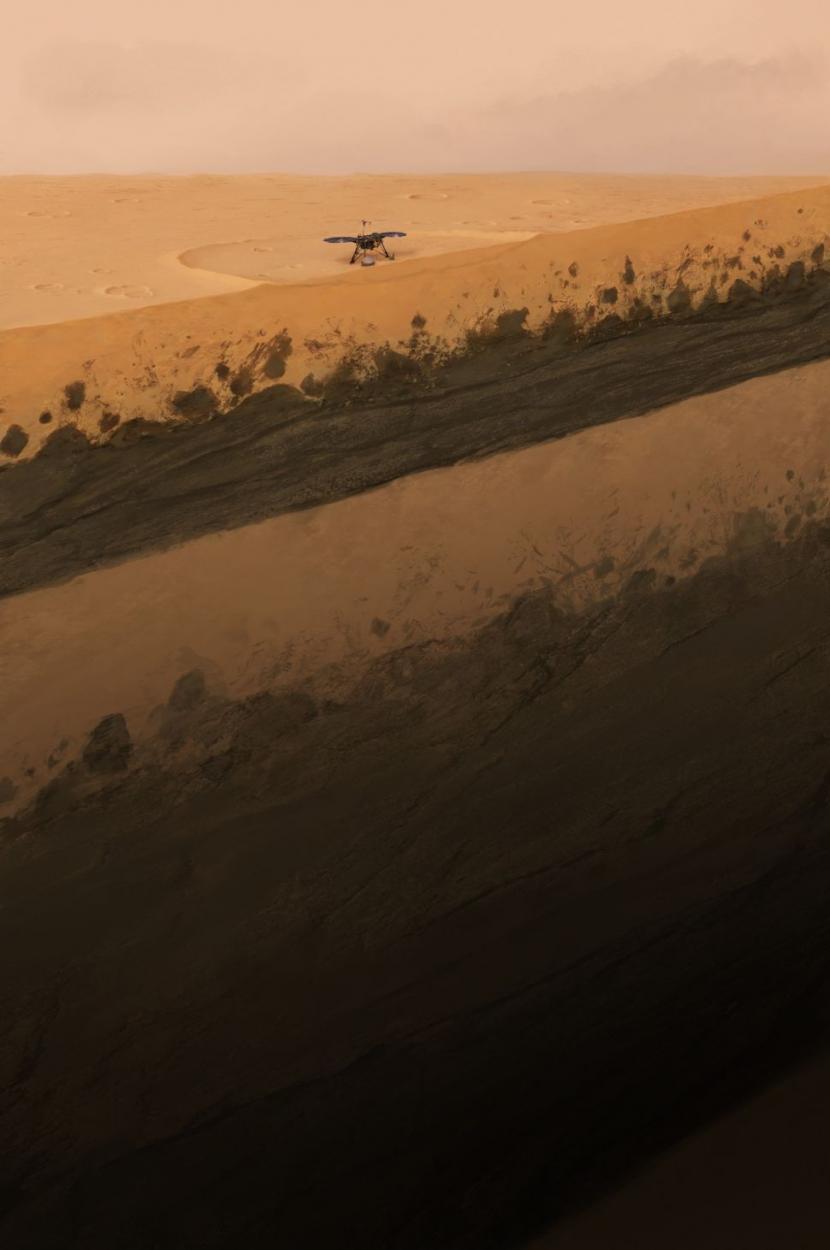Scientists suspect what is thought to be liquid water is volcanic rock.
REPUBLIKA.CO.ID, TEXAS — Last year, a paper found that temperatures in Mars possibly too cold for water to remain unfrozen in the south polar region of Mars. Now a new study has found that radar signals interpreted as liquid water may represent another abundant resource on Mars: volcanic rock.
“Here, we aimed to determine whether the current Martian terrain could produce strong basalt echoes if covered by a planet-wide ice sheet,” the researchers wrote in their paper. Sciencealert, Tuesday (25/1/2022).
“We found that some of the existing volcanic-associated terrain can produce very strong basal signal analogues to what is observed in the south polar cap,” he said.
The detection of an underground reservoir of liquid water at Mars’ south pole was announced in 2018. Radar signals bouncing off just below the planet’s surface revealed a highly reflective patch of radar 1.4 kilometers beneath the ice, consistent with an underground pool of liquid water.
Subsequent searches found a more glossy reflective patch, revealing an entire network of underground lakes. It will be huge.
On Earth, underground bodies of water are places where we can find microbial life that depends on chemical reactions, not sunlight, to survive. If there is life on Mars, we might find it in a similar environment. But Mars is likely, too cold for such a liquid reservoir.
“For water to be kept this close to the surface, you need a very salty environment and a strong source of heat, which is generated locally, but that doesn’t match what we know about this region,” said planetary scientist Cyril Grima of the University of Texas. Institute for Geophysics.
This begs the question: What is that glossy cut? A subsequent paper examining the data found that frozen clay can produce a reflectivity similar to the signal detected by the Mars Advanced Radar of Subsurface and Ionosphere Sounding (MARSIS) instrument on the European Space Agency’s Mars Express probe.
Grima and his colleagues took a different approach. They laid a virtual ice sheet across the Martian radar sphere, consisting of three years of MARSIS data, showing what the red planet might look like through 1.4 kilometers of frozen water.
–


